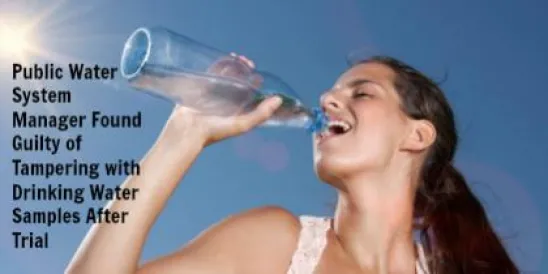On May 24, 2014, Miami-Dade County announced its proposal to amend its Potable Water Supply Wellfield Protection Ordinance and associated maps for the Northwest Wellfield and the West Interim Wellfield protection areas. The County’s announcement was preceded by a May 19, 2014, technical workshop on the proposed changes, with presentations by U.S. Geological Survey (U.S.G.S.) and the County’s Division of Department of Environmental Resources Management. The workshop was well attended , including representatives of the regulated community, environmental advocacy groups, and other governmental bodies.
Regulatory Context
The drinking water in Miami-Dade County is drawn by large production wells from the Biscayne Aquifer, a porous limerock formation that is situated very near the ground surface. The Biscayne Aquifer serves as the source of potable water for more than 2 million people who live and work in the County. To protect this important drinking water supply source from contamination, the County has established certain wellfield protection areas (based upon their proximity to the production wells and the geological traits of the aquifer), in which the use, generation, storage, and handling of hazardous wastes or hazardous materials are prohibited or limited. Septic tank usage and the extent of excavations are also restricted within a welfield protection area. Under the current wellfield protection ordinance, the properties closest to the production wells are generally subject to the strictest regulations and the restrictions are gradually lessened with increased distance from the production wells (known as travel time).
The biggest source of drinking water lie within the Northwest Wellfield protection area, which was established by ordinance in 1984. The NW Wellfield protection area is located principally west of the Homestead Extension of the Turnpike, south of State Road 27, east of Krome Avenue, and north of SW 12th Street.
The Proposed Changes
This proposal is the first comprehensive change to the Wellfield Protection Ordinance in 30 years. Among the amendments to the existing ordinance proposed by County staff are revisions to the existing definitions of sewage loading and hazardous materials, new definitions of de minimis quantity and onsite sewage treatment and disposal systems, and deletions of the prior tables with the allowed land uses within the wellfield protection areas in favor a broader set of criteria for appropriate land uses within the NW Wellfield protection area. The County is also amending the ordinance with respect to sewage loading and the requirements for the use of septic tanks.
The most significant changes, however, are to the NW Wellfield and West Wellfield protection area maps, which are based upon modeling conducted by the U.S. G.S. in 2004 and updated in 2013 [Report 2013-186 1086: Estimation of Capture Zones and Drawdown at the Northwest and West Well Fields, Miami-Dade County, Florida, Using an Unconstrained Monte Carlo Analysis: Recent (2004) and Proposed Conditions]. Overlays comparing the contours of the existing and proposed wellfield protection areas for the NW Wellfield and West Wellfield protection areas, show the changes in the overall geographic boundaries and the new approach to the application of the travel time limitations. See pages 18-22 of the County’s technical workshop presentation.
Public comments on the proposed ordinance and maps are due to Wilbur Mayorga, Chief of the County’s Environmental Monitoring and Restoration Division, at mayorw@miamidade.gov on or before the close of business on June 6, 2014.
Those Potentially Affected By The Changes
If you own property or operate a business in an existing or proposed wellfield protection area or propose to do so, and the property or business is served by a septic tank or on-site domestic water well or stores or uses hazardous materials/wastes, then you may have an interest in understanding the effect of the proposed wellfield protection changes on your property or business.
Local Legislative Process
Once the County staff has finalized the proposed ordinance after the conclusion of the public comment period, the ordinance must be considered at two readings before the Board of County Commissioners. Because the ordinance will apply County-wide (i.e., in the incorporated and unincorporated areas of the County), there is a mandatory 45-day period before first and second readings of the ordinance. The ordinance will be assigned to Committee and heard at the assigned Committee between the first and second readings. Current projections have first reading occurring before the Commission’s summer recess and second reading occurring in the fall of 2014.



 />i
/>i

